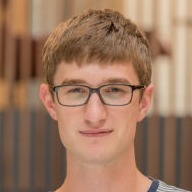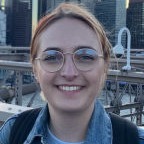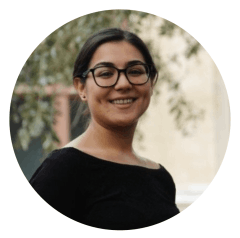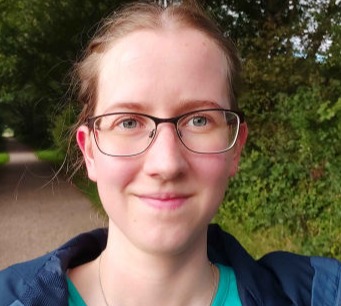September 2023: Atreya joins our team!
Our new post doc, Atreya has arrived. Atreya did his PhD in Durham and after that went to Huntsville, Alabama, to work on VERITAS and CTA. We’re extremely happy to have him back in Europe, welcome!
August 2023: Contributions to the EPS HEP Meeting
The biggest European meeting on high energy physics took place in Hamburg this summer. Our group was well represented with 3 posters and one talk!
July 2023: Joule receives PIER seed funding
Our post doc Joule receives seed funding from PIER to investigate our photon-number-resolving capabilities of our transition edge sensor for characterizing so-called squeezed light states. Congratulations Joule!
July 2023: two new papers out!
We’re happy to share that two more works of our groups are accepted for publication. On one machine-learning applications to our TES data, the other one on constraints on the intergalactic magnetic field.
June 2023: ALPS II starts data taking
On May 23, ALPS II started it's initial science run - we are very excited to begin the hunt for axions. Read press releases here and here.
May 2023: Two more Bachelor theses defended, new masters student
In May, we had two more successful defences from our Bachelor students Till Moritz and Malte Thoms. Till performed a joint analysis of H.E.S.S. and Fermi-LAT data of the blazar PG1553+113. Malte further developed our machine learning tools to analyze ALPS II TES data. Well done!
Also, Lea joined our team as our first masters student. She will work on searches for signatures of the intergalactic field using the GRB 221009A. Welcome Lea!
February 2023: We are hiring!
We have two openings for postdoc positions in my new group at CP3-Origins to work on high-energy astroparticle physics as well as quantum sensors for particle physics. Click on the links for more information and to apply. Come and join our team!
January 2023: First Bachelor theses defended
In January, we had the pleasure to listen to the first three excellent bachelor defenses about projects in our group. Yosef Abed worked on H.E.S.S. observations of the blazar PG1553+113, Jan Wiesenmüller characterized an optical attenuator for our ALPS II TES system efficiency measurement, and Emre Toka looked into signal and background discrimination as well as background characterization of the TES detector using machine learning. Congratulations to all of them!
November 11, 2022: Jamie has defended his thesis
Today, Jamie, an associated member of our group, successfully defended his thesis at Oxford University. Congratulations Dr. Davies!
November 8, 2022: New constraints on photon-axion mixing from Fermi observations
In this work led by Jamie Davies we derive new constraints on photon-axion mixing in magnetic fields of bright flat spectrum radio quasars using Fermi-LAT observations. For the first time, our gamma-ray constraints probe a new region of the axion parameter space up to axion masses of 200 neV. The paper is submitted to PRD and available on arxiv (see also our research result section).
October 1, 2022: Sara Porras Bedmar, our new PhD student, has arrived
We are very happy that Sara Porras Bedmar is joining our team. Sara got her masters degree in astrophysics and cosmology from the Universidad Autónoma de Madrid (working in the DAMASCO group). Sara will work on the contribution of axion/ALP decays to diffuse photons fields. Welcome!
August 2022: Our contributions to the wavy dark matter summer
The University of Mainz hosted two special events on "wavy dark matter" this summer: a summer school in Bad Honnef as well as the Patras workshop in Mainz. Joule and Manuel gave lectures at the summer school and also presented research results at the Patras workshop.
July 15, 2022: Three bachelor students work with us over the summer
We are very delighted to have three undergrad students with us over the summer who will work on their final bachelors thesis. The thesis topics include the application of machine learning algorithms to ALPS II data, lab work in connection with the ALPS II transition edge sensor, as well as the characterization of the gamma-ray emission of particular blazar.
July 4, 2022: Contributions to Gamma Symposium
Our group presented results on the magnetic field modeling for ALP searches in M87 as well as new constraints on the intergalactic magnetic field (IGMF) at the 7th Heidelberg International Symposium on High-Energy Gamma-Ray Astronomy in Barcelona. The new IGMF constraints are featured in this press release and we are preparing scientific publications on the presented topics - stay tuned!
February 22, 2022: New review article on gamma-ray propagation
Together with Jonathan Biteau from the Université Paris-Sud, we wrote a review article on propagation of gamma rays over cosmological distances. We hope to give a broad overview and make it easier for new students to enter this exciting field of research. It's open access and available here.
December 15, 2021: New paper on photon-photon dispersion in active galaxies accepted in PRD
During his research stay in Hamburg, our affiliated member Jamie managed to finish his paper on the effect of photon-photon dispersion on photon-ALP oscillations in active galaxies. Congratulations Jamie! Check out more details in the research results.
November 1, 2021: New postdoc joins our team
Gulden (Joule) Othman joins our team after having successfully defended her PhD thesis at the University of North Carolina at Chapel Hill. Joule will help us to set up the TES detector for the ALPS II experiment. Welcome Joule!
September 16, 2021: New paper on the LAT sensitivity for axion induced gamma-ray bursts accepted!
The study, led by Milena Crnogorčević from the University of Maryland, explores the sensitivity of the LAT low energy technique to detect gamma-ray bursts from core collapse supernovae caused by axions converting to gamma rays in the magnetic field of the Milky Way. Check out more details in the research results.
August 1, 2021: New PhD student has arrived
Our first PhD student, Rahul Cecil, is joining our team. Rahul got his masters degree in astroparticle phyiscs from the University of Tübingen and will focus on ALP searches with the H.E.S.S. telescopes and the Fermi LAT.
July 2021: Contributions to ICRC
Our work was featured with multiple contributions at the ICRC 2021 which was held online this time, see our research results section!





